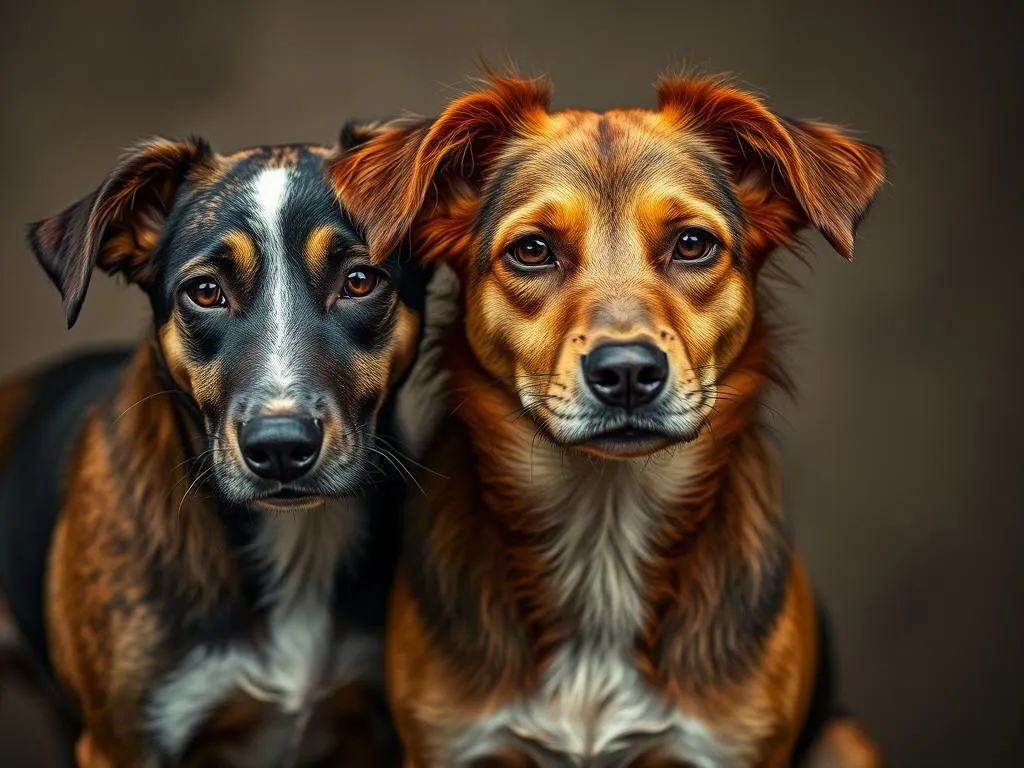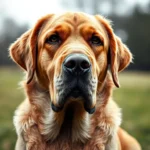
Introduction
Primitive dog breeds are a fascinating category of canines that offer insights into our shared history with dogs. These breeds are often characterized by their close resemblance to the ancestors of domestic dogs, exhibiting traits that have remained unchanged for thousands of years. Unlike modern breeds that have been heavily influenced by selective breeding for specific traits, primitive breeds retain a more natural appearance and behavior.
Understanding primitive breeds is essential for dog enthusiasts, breeders, and anyone interested in the rich tapestry of canine history. These breeds often played crucial roles in ancient societies, assisting humans in hunting, herding, and protection. Their preservation is not just about maintaining genetic diversity but also about honoring the legacy of dogs that have been with us since ancient times.
Characteristics of Primitive Dog Breeds
Physical Traits
Primitive dog breeds share several common physical features that distinguish them from more modern breeds. Typically, they tend to be medium to large in size, with a strong and muscular build. Their coat types vary, but many have thick, double coats that help them withstand harsh climates. The ear shapes are often erect or semi-erect, enhancing their alertness and ability to communicate effectively.
Examples of Primitive Breeds:
– Basenji: Known for their short coat and tightly curled tail.
– Siberian Husky: Recognized for their striking blue or multicolored eyes and thick fur.
– Alaskan Malamute: Features a sturdy frame and a dense coat, ideal for cold environments.
Behavioral Traits
When it comes to behavioral traits, primitive dog breeds exhibit instinctual behaviors that are often deeply rooted in their ancestry. They are generally more independent than modern breeds, reflecting their survival instincts in the wild. Their temperament can range from loyal and affectionate to aloof and reserved, often depending on their socialization experiences.
Primitive breeds also tend to have unique socialization patterns. While they can bond closely with their human companions, they may also have a strong prey drive, making early socialization crucial. Understanding their behavioral traits can help potential owners manage and nurture their instincts effectively.
Genetic and Evolutionary Background
The genetic and evolutionary background of primitive dog breeds is a subject of great interest. These breeds are believed to have diverged from the ancestral wolf population much earlier than modern breeds. This long-standing genetic lineage contributes to their distinct characteristics, which often include a higher level of self-sufficiency and adaptability to various environments.
Comparing primitive breeds to modern dog breeds reveals significant differences in genetic diversity. Primitive breeds often possess a more varied gene pool, which can contribute to greater resilience against certain health issues, making them intriguing for breeding programs focused on conservation and sustainability.
List of Notable Primitive Dog Breeds
Overview of Top Primitive Breeds
Here’s a look at some of the most notable primitive dog breeds, each with unique traits and histories that reflect their ancient roots.
Basenji
- Origin: Central Africa
- Traits: Small to medium size, short coat, tightly curled tail.
- Temperament: Known as the “barkless dog,” Basenjis are intelligent, curious, and playful but can be aloof with strangers. They require consistent training and mental stimulation.
Shikoku
- Origin: Japan
- Traits: Medium-sized, with a curled tail and a dense double coat.
- Temperament: Shikokus are spirited and alert, making excellent companions for active owners. They are loyal but can be reserved around newcomers.
Siberian Husky
- Origin: Siberia
- Traits: Medium size, thick double coat, distinctive markings, and bright blue or multicolored eyes.
- Temperament: Energetic and friendly, Siberian Huskies are known for their playful nature and strong pack instincts. They require ample exercise and social interaction.
Alaskan Malamute
- Origin: Alaska
- Traits: Large size, heavy fur, and a bushy tail.
- Temperament: Alaskan Malamutes are strong, affectionate, and intelligent. They thrive on companionship and need regular physical activity.
Dingo
- Origin: Australia
- Traits: Medium size, lean build, and a short coat.
- Temperament: Dingoes are highly adaptable and resourceful, exhibiting strong survival instincts. They can be wary of humans and require substantial socialization.
Thai Ridgeback
- Origin: Thailand
- Traits: Medium size, muscular build, and a distinctive ridge of hair along the back.
- Temperament: Thai Ridgebacks are loyal and independent, often forming strong bonds with their families. They can be reserved with strangers and require consistent training.
Chow Chow
- Origin: China
- Traits: Medium to large size, dense double coat, and a lion-like mane.
- Temperament: Chow Chows are known for their aloofness and independence. They can be loyal and protective but require early socialization to curb potential behavioral issues.
New Guinea Singing Dog
- Origin: Papua New Guinea
- Traits: Small size, with a wolf-like appearance and a unique vocalization.
- Temperament: These dogs are agile, intelligent, and social, known for their playful nature. They require an experienced owner due to their strong prey drive.
The Role of Primitive Breeds in Different Cultures
Historical Roles
Throughout history, primitive dog breeds have held significant roles in various cultures. Many were utilized for hunting, herding, and guarding, showcasing their versatility and loyalty. For instance, the Alaskan Malamute was crucial for sledding and transporting goods in harsh Arctic conditions, while the Basenji was prized for its hunting prowess in the forests of Africa.
Cultural Symbolism
In addition to their practical uses, primitive breeds often carry cultural symbolism. The Chow Chow, for example, has been celebrated in Chinese art and folklore, symbolizing nobility and strength. Similarly, the Siberian Husky is often associated with resilience and endurance, reflecting the harsh environments from which it originates.
Modern Implications
In contemporary society, the roles of primitive breeds have evolved. While they may not be as frequently used for their traditional purposes, they continue to capture the hearts of dog lovers. Conservation efforts are underway to preserve these breeds, as they represent a vital piece of our shared history with canines.
Care and Training of Primitive Dog Breeds
Unique Care Needs
Caring for primitive dog breeds requires an understanding of their unique needs. These breeds often thrive in environments that mimic their natural habitats. A balanced diet that caters to their energy levels is crucial, as many primitive breeds are highly active. Regular exercise is essential to prevent boredom and associated behavioral issues.
Training Approaches
Training primitive breeds can be a rewarding yet challenging experience. Due to their independent nature, traditional training methods may not always be effective. Instead, employing positive reinforcement techniques and respecting their instincts can yield better results. Early socialization is vital to help them adapt to various environments and situations, reducing the likelihood of behavioral problems.
Challenges
Owners of primitive breeds may encounter specific challenges. Common behavioral issues include stubbornness, strong prey drives, and wariness of strangers. Understanding these traits can help owners develop strategies to manage them effectively. Consistent training and socialization are key to fostering a well-adjusted companion.
The Future of Primitive Dog Breeds
Conservation Efforts
As the popularity of designer breeds increases, many primitive dog breeds face threats to their survival. Conservation initiatives aim to maintain genetic diversity and promote awareness about these unique breeds. Organizations dedicated to preserving these dogs work tirelessly to educate the public and promote responsible breeding practices.
Challenges to Survival
Primitive breeds face numerous challenges in modern society, including genetic dilution and habitat loss. As urbanization expands, these breeds often struggle to find suitable environments that cater to their natural instincts. Additionally, the increasing popularity of mixed breeds can overshadow the importance of preserving these unique dogs.
Role of Enthusiasts and Organizations
Dog enthusiasts and organizations play a crucial role in the preservation of primitive breeds. By supporting breed clubs, participating in conservation efforts, and advocating for responsible breeding practices, individuals can contribute to the ongoing survival of these remarkable dogs. Engaging in education and outreach can also help raise awareness about the importance of maintaining genetic diversity within the canine population.
Conclusion
Understanding and appreciating primitive dog breeds is vital for anyone interested in the history and evolution of our canine companions. These breeds not only provide a glimpse into the past but also remind us of the importance of conservation and responsible ownership. By fostering a greater awareness of these unique dogs, we can contribute to their preservation and ensure that their legacy continues for generations to come.









